
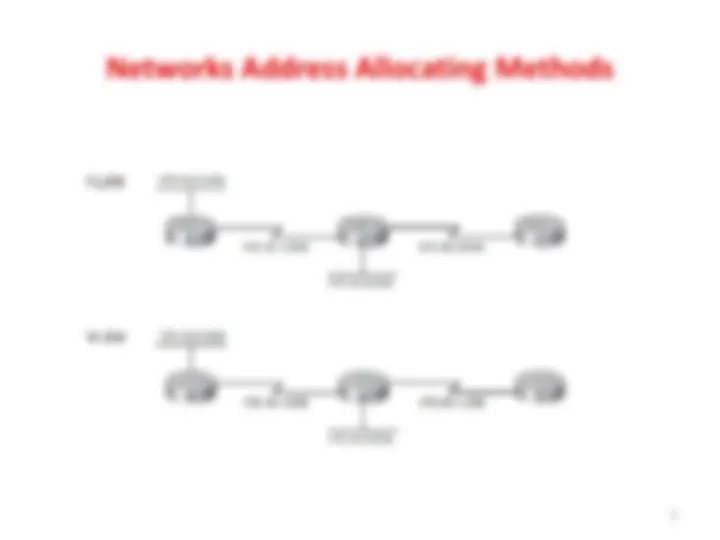
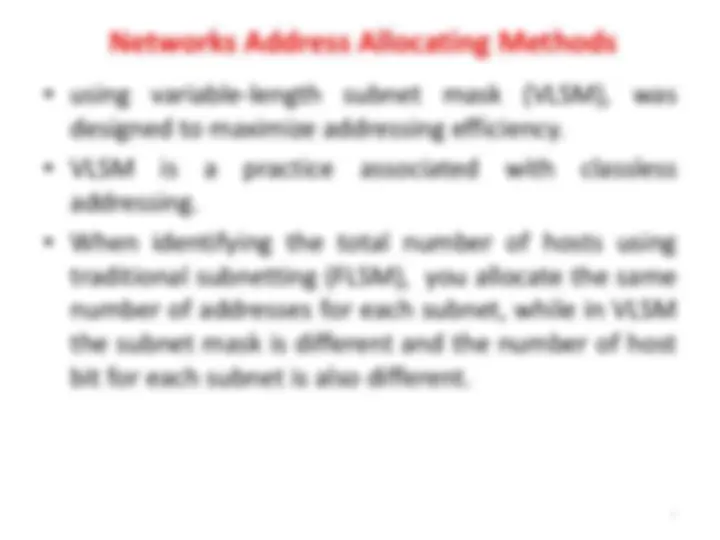
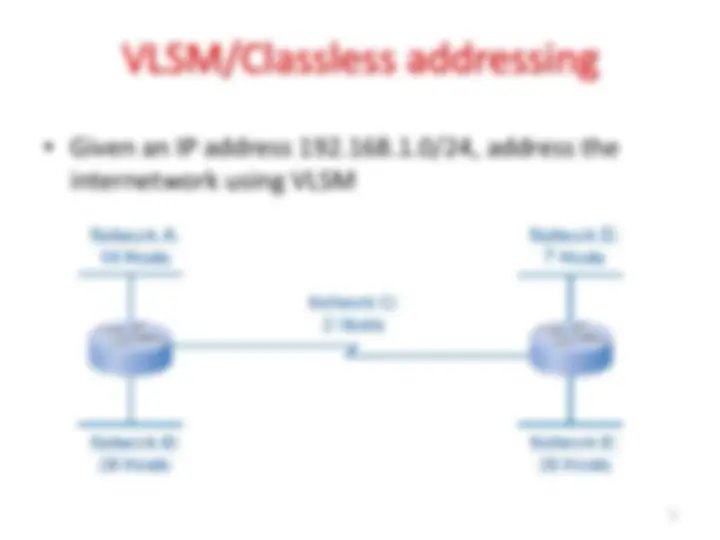
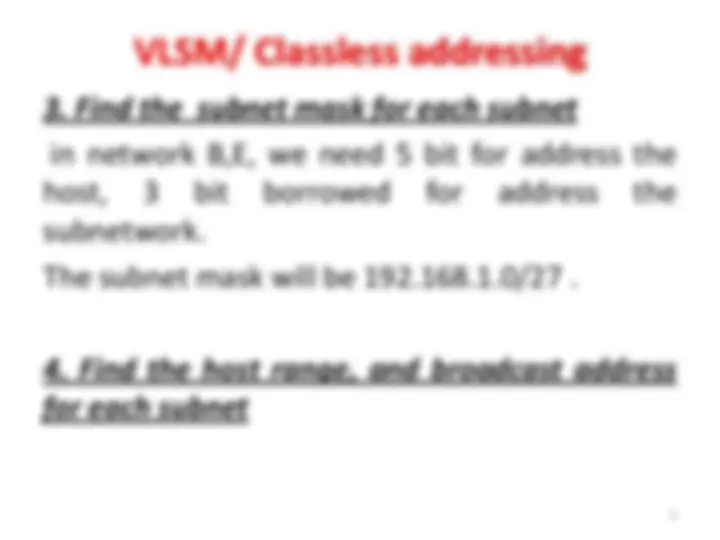
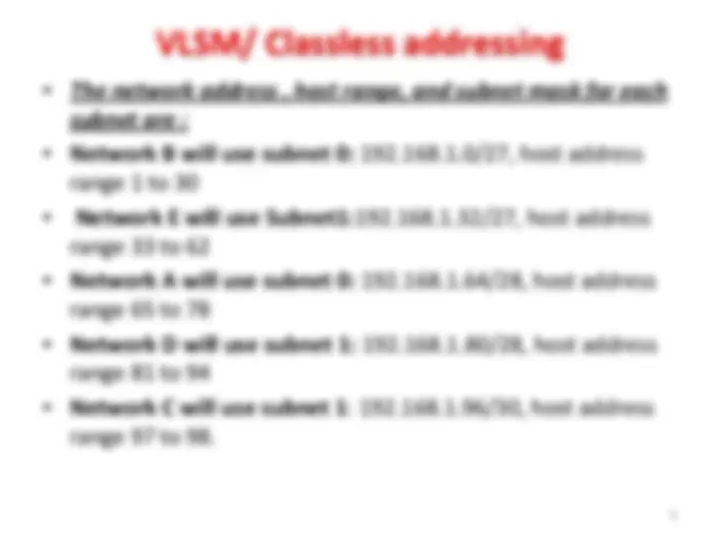
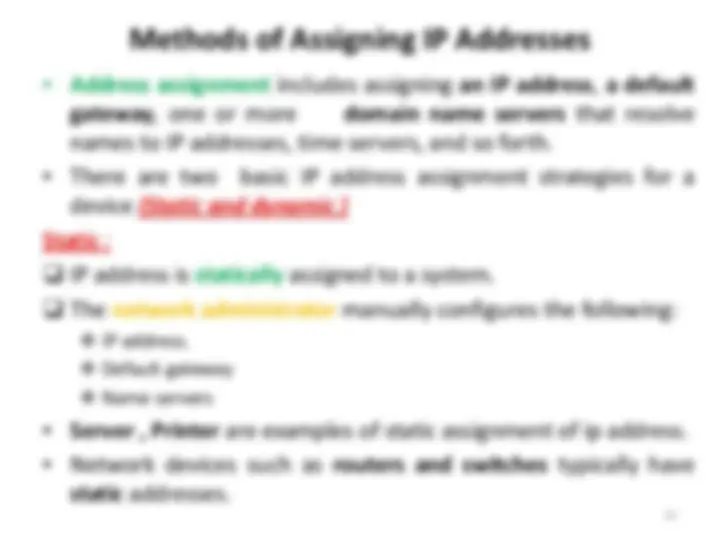
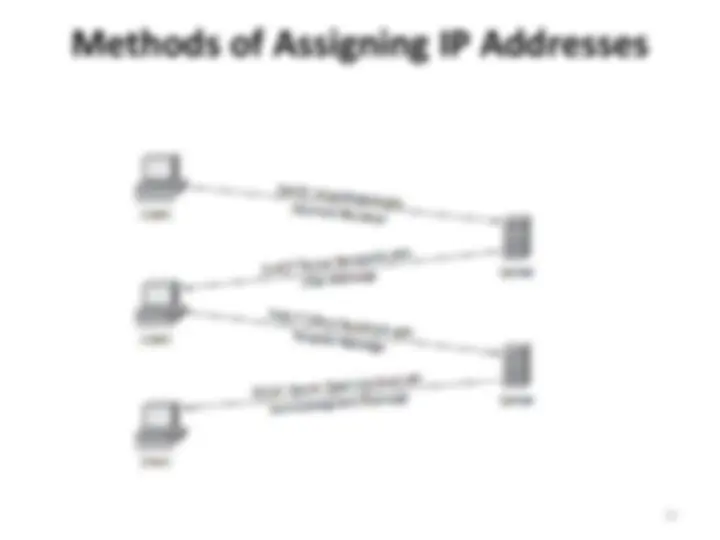



Study with the several resources on Docsity

Earn points by helping other students or get them with a premium plan


Prepare for your exams
Study with the several resources on Docsity

Earn points to download
Earn points by helping other students or get them with a premium plan
Community
Ask the community for help and clear up your study doubts
Discover the best universities in your country according to Docsity users
Free resources
Download our free guides on studying techniques, anxiety management strategies, and thesis advice from Docsity tutors
An in-depth explanation of Variable-Length Subnet Masking (VLSM) as a method for allocating IP addresses in an internetwork. VLSM is a practice associated with classless addressing, which allows for different subnet masks and host bits for each subnet based on the number of hosts. examples of addressing requirements and the process of finding the subnet mask, host range, and broadcast address for each subnet.
What you will learn
Typology: Study notes
1 / 14

This page cannot be seen from the preview
Don't miss anything!









Lecture: Dr.Suad Abdulelah Alasadi
1. begin the process by subnetting for the largest host requirement first. In this case, the largest requirements are for network B and network E, each with 28 hosts. 2. Apply the formula usable hosts = 2n–2.
For networks B and E, 5 bits are borrowed from the host portion and the calculation is 2^5 =32–2. Only 30 usable host addresses are available
VLSM/ Classless addressing
Methods of Assigning IP Addresses
Dynamic Host Configuration Protocol ( DHCP ) is the newest and provides the most features for assign IP automatically.
DHCP is used to provide dynamic IP address allocation to hosts. DHCP uses a client/server model.
Methods of Assigning IP Addresses